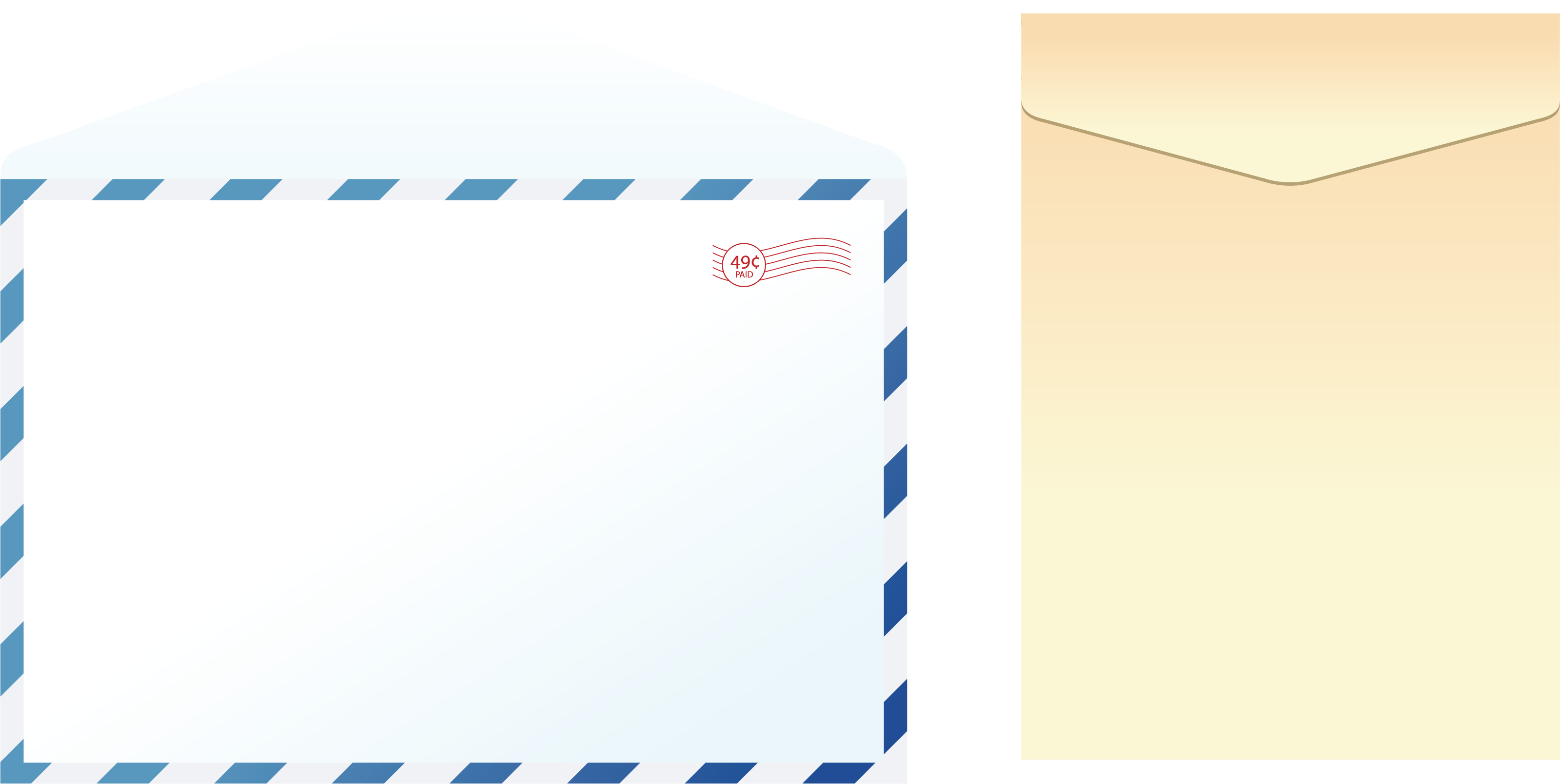
This image has format transparent PNG with resolution 3199x1608.
You can download this image in best resolution from this page and use it for design and web design.
Envelope PNG with transparent background you can download for free, just click on download button.
An envelope is a common packaging item, usually made of thin, flat material. It is designed to contain a flat object, such as a letter or card.
Traditional envelopes are made from sheets of paper cut to one of three shapes: a rhombus, a short-arm cross or a kite. These shapes allow for the making of the envelope structure by folding the sheet sides around a central rectangular area. In this manner, a rectangle-faced enclosure is formed with an arrangement of four flaps on the reverse side.
When the folding sequence is such that the last flap to be closed is on a short side it is referred to in commercial envelope manufacture as a pocket – a format frequently employed in the packaging of small quantities of seeds. Although in principle the flaps can be held in place by securing the topmost flap at a single point (for example with a wax seal), generally they are pasted or gummed together at the overlaps. They are most commonly used for enclosing and sending mail (letters) through a prepaid-postage postal system.
Window envelopes have a hole cut in the front side that allows the paper within to be seen. They are generally arranged so that the receiving address printed on the letter is visible, saving the sender from having to duplicate the address on the envelope itself. The window is normally covered with a transparent or translucent film to protect the letter inside, as was first designed by Americus F. Callahan in 1901 and patented the following year. In some cases, shortages of materials or the need to economize resulted in envelopes that had no film covering the window.[citation needed] One innovative process, invented in Europe about 1905, involved using hot oil to saturate the area of the envelope where the address would appear.{{citation needed|date=November 2020} The treated area became sufficiently translucent for the address to be readable. As of 2009 there is no international standard for window envelopes, but some countries, including Germany and the United Kingdom, have national standards.
An aerogram is related to a lettersheet, both being designed to have writing on the inside to minimize the weight. Any handmade envelope is effectively a lettersheet because prior to the folding stage it offers the opportunity for writing a message on that area of the sheet that after folding becomes the inside of the face of the envelope.
The "envelope" used to launch the Penny Post component of the British postal reforms of 1840 by Sir Rowland Hill and the invention of the postage stamp, was a lozenge-shaped lettersheet known as a Mulready. If desired, a separate letter could be enclosed with postage remaining at one penny provided the combined weight did not exceed half an ounce (14 grams). This was a legacy of the previous system of calculating postage, which partly depended on the number of sheets of paper used.
During the U.S. Civil War those in the Confederate States Army occasionally used envelopes made from wallpaper, due to financial hardship.
A "return envelope" is a pre-addressed, smaller envelope included as the contents of a larger envelope and can be used for courtesy reply mail, metered reply mail, or freepost (business reply mail). Some envelopes are designed to be reused as the return envelope, saving the expense of including a return envelope in the contents of the original envelope. The direct mail industry makes extensive use of return envelopes as a response mechanism.
Up until 1840, all envelopes were handmade, each being individually cut to the appropriate shape out of an individual rectangular sheet. In that year George Wilson in the United Kingdom patented the method of tessellating (tiling) a number of envelope patterns across and down a large sheet, thereby reducing the overall amount of waste produced per envelope when they were cut out. In 1845 Edwin Hill and Warren de la Rue obtained a patent for a steam-driven machine that not only cut out the envelope shapes but creased and folded them as well. (Mechanised gumming had yet to be devised.) The convenience of the sheets ready cut to shape popularized the use of machine-made envelopes, and the economic significance of the factories that had produced handmade envelopes gradually diminished.
As envelopes are made of paper, they are intrinsically amenable to embellishment with additional graphics and text over and above the necessary postal markings. This is a feature that the direct mail industry has long taken advantage of—and more recently the Mail Art movement. Custom printed envelopes has also become an increasingly popular marketing method for small business.
Most of the over 400 billion envelopes of all sizes made worldwide are machine-made.
In this clipart you can download free PNG images: Envelope PNG images free download